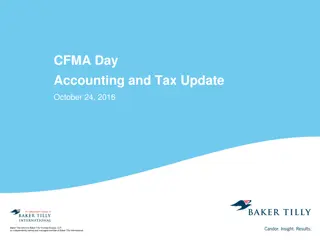
Research Methodology in Veterinary and Animal Husbandry Extension - Topics and Data Overview
Explore the key concepts of research methodology in veterinary and animal husbandry extension, covering topics such as types of research, hypothesis formulation, data analysis, and data classification. Understand the importance of data in drawing conclusions and enhancing statistical thinking.
Download Presentation

Please find below an Image/Link to download the presentation.
The content on the website is provided AS IS for your information and personal use only. It may not be sold, licensed, or shared on other websites without obtaining consent from the author. If you encounter any issues during the download, it is possible that the publisher has removed the file from their server.
You are allowed to download the files provided on this website for personal or commercial use, subject to the condition that they are used lawfully. All files are the property of their respective owners.
The content on the website is provided AS IS for your information and personal use only. It may not be sold, licensed, or shared on other websites without obtaining consent from the author.
E N D
Presentation Transcript
AHE 606 (RESEARCH METHODOLOGY IN VETERINARY AND ANIMAL HUSBANDRY EXTENSION) Department of Veterinary & Animal Husbandry Extension Education, BVC
Topics covered Concept, nature and scope of research in social sciences. Types of research fundamental, applied and action research, experimental and non- experimental research. Variables, types and their measurement. Selection and formulation of research problem. Hypothesis importance, selection criteria (quality of workable hypothesis), formulation and testing of hypothesis.
Idea behind this lecture To increase understanding of key concepts related to data. .. To enhance idea of data analysis quantitatively. To make statistical thinking popular. To increase understanding of theoretical concept of statistics without fear of complex formula. To enhance idea of data analysis by software. Consequently, to develop interest in reading of research articles.
Data Data: Facts, especially numerical facts, collected together for reference or information. Data: Set of observations collected on variable is called data. A dictionary defines data as facts or figures from which conclusions may be drawn. It is a collective noun or plural noun.Datum is the singular form of the noun data.
Type of Data 1. Qualitative : Nonnumeric 2. Quantitative : Numeric Qualitative Classification of Data One way classification Class Number Rural 65 Urban 35 Total 100 Two way classification Faculty Boys Girls Total Arts 350 200 550 Science 175 125 300 Commerce 100 50 150 Total 625 375 1000
Cont. Three way classification Caste Sex Class- Level Hi ndu Girls Mu Slim Girls Si Kh Girls Chr istan Girls Total Boys Boys Boys Boys U. G. 2000 1700 900 400 600 240 200 160 6200 P. G. 800 200 70 80 80 50 85 35 1400 Ph. D. 200 100 30 20 20 10 15 05 400 Total 3000 2000 1000 500 700 300 300 200 8000 Multi way classification
Cont. Quantitative Classification of Data Ascending Order : 22,34,37,46,48,49,50,53,56,59,67,69,70,73. Descending Order: 73,70,69,67,59,56,53,50,49,48,46,37,34,22. Discrete Data: are numeric data that have a finite number of possible values. Continuous Data: have infinite possibilities . Grouped Data: Organised data ( in certain groups ) Ungrouped Data : Raw data
Variables- Variable: Any phenomenon which takes more than one different values is called variable. or A characteristic, number, or quantity that increases or decreases over time, or takes different values in different situations. EX. Height, weight, income, sex, mob. No., blood pressure, Blood group are some example. Qualitative Variable Quantitative Variable 1. Discrete Variable 2. Continuous Variable
Types of Measurement Scales 1. Nominal 2. Ordinal 3. Interval 4. Ratio
Comparison of Various Levels of Measurement Level of Measurement Nominal Ordinal interval Ratio Magnitude No Yes Yes Yes Equal Intervals No No Yes Yes Absolute Zero No No No Yes Possible Mathe. Operation Count = Count < + _ + --- * / > Nature of Results of Measurement Classification in equal groups Classification in groups with hierarchy Allotment of scores having equal interval Allotment of scores having equal interval with absolute 0 Statistical Techniques Frequency distribution, Mode Frequency distribution, Mode Median, Quartiles Correlation ( R D ) Mean , S D , Product Moment Correlation Harmonic and Geometric Mean
Types of Data and Level of Measurement Types of Data Level of Measurement Examples Nominal ( No inherent order in categories ) Faculty- Arts, Science, Law Ethnicity , Caste Qualitative / Categorical Ordinal ( Categories have inherent order ) Job Grade , Age Group Binary ( 2 categories- special case of above ) Gender , Rural /Urban Discrete Ratio ( Have absolute zero ) No of class room in a school No of children in a family Quantitative Continuous Temperature 0C/0F Interval ( No absolute zero ) Ratio Height , Age , Weight
Data Analysis Data analysis An attempt by the researcher to summarize collected data. Turning raw data into useful information. Purpose is to provide answers to questions being asked at a program site or research questions. Even the greatest amount and best quality data mean nothing if not properly analyzed or if not analyzed at all. Analysis does not mean using computer software package. Analysis is looking at the data in light of the questions you need to answer ( Hypothesis Testing ). Data Interpretation Attempt to find meaning
Contd. The analysis of data serves the following main function: To make raw data meaningful. To test hypotheses / null hypotheses. To obtain the significant result. To draw some inferences or make generalization. To estimating parameters.
Why is it important to know statistics To make data meaningful. There is a daily deluge of quantitative /qualitative observations & individuals need to be able to make sense of these observations. The statistics provides tools by which we can filter sensible information from observations. It also protects individuals from the misleading practices of miss interpretation of data .
What is Statistics? Where does this Data come from? Statistics Data Information Data: Facts, especially numerical facts, collected together for reference or information. Information: Knowledge communicated concerning some particular fact
Meaning of Statistics Statistics is the science of counting. Statistics is the science of estimates and probabilities. Statistics is a way to get information from data. Statistics is a tool for creating new understanding from a set of numbers. Statistics deals with collection, classification, and interpretation of data obtained by the conduct of surveys and experiment.
Nature of Statistics Statistics: present data in short. generally deals with group not individual. deals with the variability of the group. deals with the quantification aspect of the problem. Inductive in nature (From specific to general ). Result is not 100% accurate but it is predicted or expressed in the terms of probabilities. The interpretation of the result is always reference based. Variables which are affected by random factors are generally studied by the statistics. Variables governed by mathematical equation are not the field of statistics.
Statistical Methods Theoretical Statistical Method Applied Statistical Method Inferential Statistical Method Descriptive Statistical Method Parametric Statistics Non Parametric Statistics Frequency Distribution Measures of Central Tendencies Positional Statistics Measures of Variability Graphical Representation Coefficient of Correlation Median Test Sign Test U-Test K-S Test Friedman Test Run Test Chi-Square Test Significance of Statistics Significance Of Difference between Mean & other Statistics ANOVA Regression & Prediction Co- Variance
Contd. Parametric Data : Measured Data Non- Parametric Data : Counted or Ranked Data Level Scale Data Treatment Some Appropriate Test 1. Nominal Correlation (R D) Mann- Whitney Chi- Square Test Median Test Sign Test Wilcoxan Test Non-Parametric 2. Ordinal 3. Interval Correlation ( PM ) t Test Anova Ancova Factor Analysis Regression & Prediction Parametric 4. Ratio
Choice of statistical test from paired or matched observation
Parametric and Non-parametric tests for comparing two or more groups
Parametric Vs Non- Parametric . Parametric Non-parametric Assumed distribution Normal Any Assumed variance Homogeneous Typical data Ratio or Interval Ordinal or Nominal Data set relationships Independent Usual central measure Mean Median Benefits Can draw more conclusions Simplicity; Less affected by outliers Tests Choosing Choosing parametric test Choosing a non-parametric test Correlation test Pearson Spearman Independent measures, 2 groups Independent-measures t-test Mann-Whitney test Independent measures, >2 groups One-way, independent-measures ANOVA,Kruskal- Wallis test Repeated measures, 2 conditions Matched-pair t-test Wilcoxon test Repeated measures, >2 conditions One-way, repeated measures ANOVA Friedman's test Any Any
















